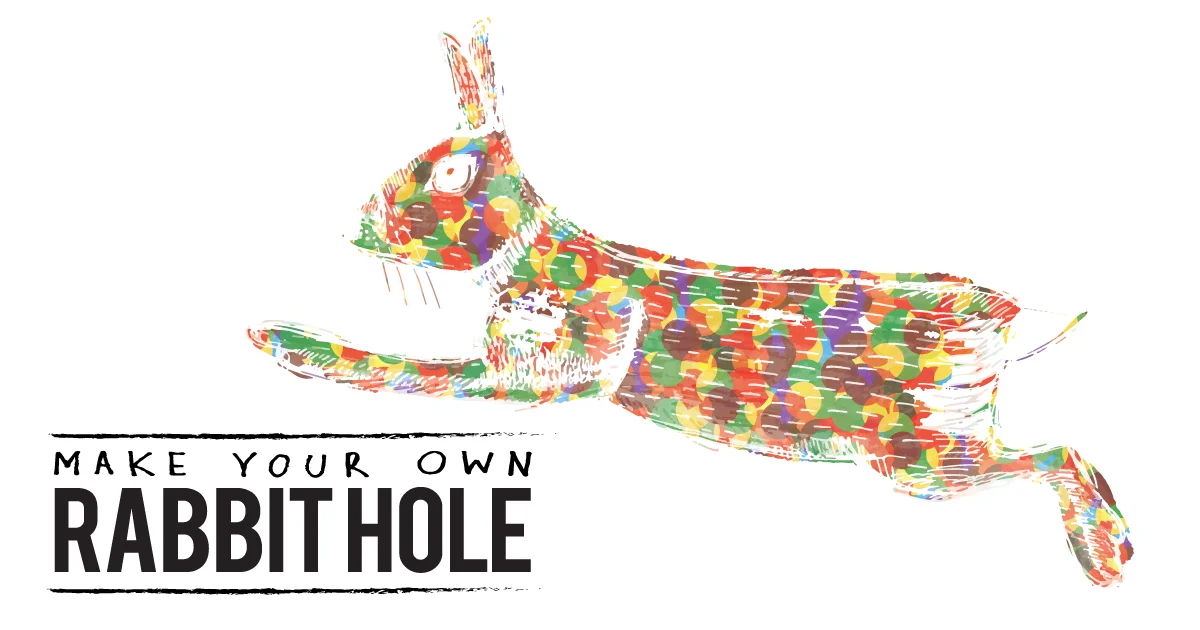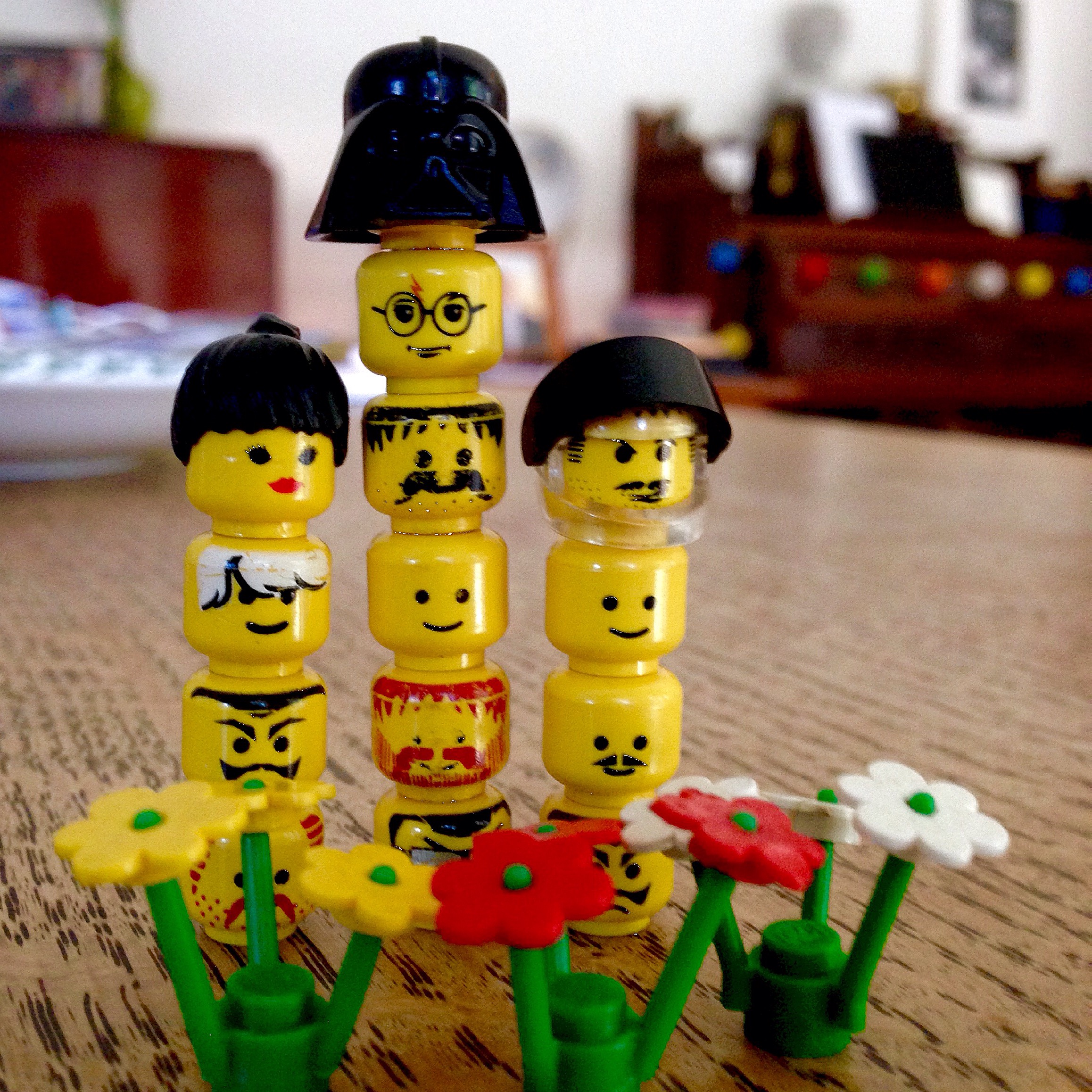If Lego has taught me anything…
/For some of us, ok maybe just me, Lego is more than a set of blocks—it's a creative block-busting manifesto!
It’s been a long time since my last entry, and it’s because I went though another period of being blocked. There’s been lots of activity—a bunch of new projects in the works—but no output, nothing finished. It’s like I’m always playing ‘task-Tetris’—not knowing which bit fits where, and how to make things land in the proper order. I saw this great quote the other day where someone said:
If Tetris has taught me anything, it’s that errors pile up and accomplishments disappear.
The past few weeks, I’ve been dipping in and out of Anne Lamott’s book, Bird by Bird: Some Instructions on Writing and Life. Lamott too periodically suffers from a debilitating lack of self-confidence and like me, at times, extreme bouts of not-sure-how-to-finish-anything-itus.
The title of her book comes from a childhood memory of her brother sitting at the kitchen table, upset because he couldn’t finish a school assignment on different species of birds. Lamott remembers her dad trying to comfort him. “Bird by bird, buddy,” his dad told him. “Just take it bird by bird.”
It’s good advice, but it’s not always that easy. Bird one can be elusive, and if you’re lucky to pin it down, bird two can be a downright little shit. The problem for me is that I often don’t know where to start, when to stop, what to do, and in what order, and with big projects, how to stay motivated and not be overwhelmed during the process.
And then, there’s the internal running dialogue to deal with… (Shut up, I know! Shush, I’m trying to tell them. No, it’s fine. I’ll fix it later.) Often, as Lamott explains, when you start writing,
your mental illnesses arrive at the desk like your sickest, most secretive relatives. And they pull up chairs in a semicircle around the computer, and they try to be quiet but you know they are there with their weird coppery breath, leering at you.
To counteract this, Lamott keeps a little knickknack on her desk—a one-inch picture frame. “It reminds me that all I have to do is to write down as much as I can see through […] the frame,” She says. “I remember to pick up the one-inch picture frame and to figure out a one-inch piece of my story to tell, one small scene, one memory, one exchange.”
Lamott treats these ‘one-inch pieces of story’ as little assignments, recommending that we should say to ourselves,
in the kindest possible way, Look, honey, all we’re going to do for now is to write a description of the river at sunrise, […] or the first time the man sees the woman he will marry. That is all we are going to do for now. We are just going to take this bird by bird. But we are going to finish this one short assignment.
It’s good advice, but it basically boils down to, ‘Just take things one step at a time,’ which we all know but seldom remember to do.
It’s like we have to constantly remind ourselves that this is how things get done—that big projects are just a series of little victories, and defeats, and compromises, but with a little faith and a lots of self-compassion and resilience, we’ll get there in the end.
The idea of Lamott’s little picture frame means so much more to me than the advice to take things one step at a time. The little keep-sake is not just a memory aid—it’s a magic talisman for warding off those sick relatives who come to punish or push us around.
The way she uses it reminds me of the film, Inception. Leonardo DiCaprio’s character keeps this miniature spinning-top which he uses to test what’s real and what’s a dream. If he sets the spinning-top going and it behaves unusually, he knows that what he’s experiencing isn’t real and that he might have forgotten where he is, what he’s doing. Most of the major characters keep a personal trinket like this, which in the film they call ‘totems.’
The parallel between Lamott’s picture frame and the motif of the totems in Inception is that they are a constant reminder to be vigilant and not lose perspective. Both these objects acknowledge how sometimes we need something to remind us what’s important and to pull us into the present. They prompt us to check and test reality—after all, negative thinking and internal critiques are not reality. More often than not, they represent a distortion of reality.
My totem, Lego
Thinking about this made me want to find my own personal symbol. I thought about it for weeks before I finally settled on the perfect one, and now it sits next to my computer screen, quietly encouraging me to write this right now.
It’s an asymmetrical little spaceship I made out of Lego I bought from an op-shop. Today it looks like a spaceship; tomorrow it might look like something else, and that’s part of the reason why it’s my totem—my reminder of how things get made.
Lego reminds me that I am prone to ‘blocks’, and the only way to avoid them is to break complicated tasks down into, you guessed it, smaller blocks.
A ‘block’ in the first sense is my refusal to realise I’ve again fallen into that misassumption that projects will always be hard, difficult, insurmountable—that I have to do perfect first drafts, that what I do is not good enough. In the second sense, Lego blocks remind me that all I have to do is to go one bit at a time, and see what can I do with it—where can I put it, what might come next. Thus an essay, for instance, in made up of little chunks of writing that don’t have to make complete sense at first; a film is made one shot at a time; and a painting is made through a process of sketching and building up layers of paint.
Lego reminds me that I don’t have to worry about where to start—that what I create will eventually fit somewhere, so I might as well just enjoy the process and play—after all, the word Lego comes from a contraction of phrase leg godt, which means ‘play well’ in Danish.
I mean, if Lego has taught me anything, it’s that you try to make durable smaller parts, and then play with them until you have built something larger—some pleasing whole that is greater than the parts.
Lego has taught me that if it doesn’t fit this way, it might fit another. According to the Lego website, three standard, eight-stud Lego blocks can be arranged in 1,060 different ways.
Lego bricks are my totem because they are so well designed—there's something timeless about them. The Lego blocks you and I had as kids still connect with those manufactured and sold today, which in turn connect with any block made since the 1950s. And they're so well-built. I’ve never seen a worn-out or broken Lego block. And though they may be lost and found, vacuumed up or painfully stepped on, they always fit together with the same precision they did on the day they were bought. The margin of error for a machine that makes a Lego block is within two microns (or five hundredth of a millimeter).
Roland Barthes in his wonderful essay on toys argued that most toys available in France at the time were designed to prepare children for the adult roles they would later dutifully inhabit—for instance, dolls for little girls who would one day be housekeepers and mothers, tools and guns for little boys who would learn a trade, or join the army. He said, most “French toys always mean something, and this something is always entirely socialised, constituted by the myths or the techniques of modern adult life.” However, in contrast, he thought “sets of blocks, which appeal to the spirit of do-it-yourself, are the only ones which offer dynamic forms,” and allow for the possibility of endless invention.
It reminds me of watching a two-year-old playing with a toy flip-out phone that also had lollies inside. The kid was opening and closing it, pushing the buttons, and like the rest of us, being conditioned to enjoy the meaningless 'lollies' secreted behind the screen.
To see the difference between Barthes’ two categories, it’s worth quoting him at length. With toys of the first category, like the candy dispensing mobile phone,
the child can only identify himself as owner, as user, never as creator; he does not invent the world, he uses it: there are, prepared for him, actions without adventure, without wonder, without joy. He is turned into a little stay-at-home householder who does not even have to invent the mainsprings of adult causality; they are supplied to him ready-made: he has only to help himself, he is never allowed to discover anything from start to finish.
But, Barthes argues, toys of the second category, such as,
the merest set of blocks, provided it is not too refined, implies a very different learning of the world [...] He creates forms which walk, which roll, he creates life, not property: objects now act by themselves, they are no longer an inert and complicated material in the palm of his hand. But such toys are rather rare: French toys are usually based on imitation, they are meant to produce children who are users, not creators.
But Lego at times can fit into both categories—mainly because they’re bought as kits that do mimic the adult world, but the potential for endless invention is still there.
(Shit, I've written way too much, and I'm veering off into something else. Might chop that last bit out.)
Plus, if Lego has taught me anything, it’s that if you don’t like something you’ve created you can pull it apart, come back tomorrow, and begin again.
Rabbit
p.s. Lego is my totem, and I guess for someone else it might be something different. If you have a different one, I'd love to hear about it. Please share it in the comments below.














Painter Tracey Read talks about spending four weeks painting and drawing her way around Italy.